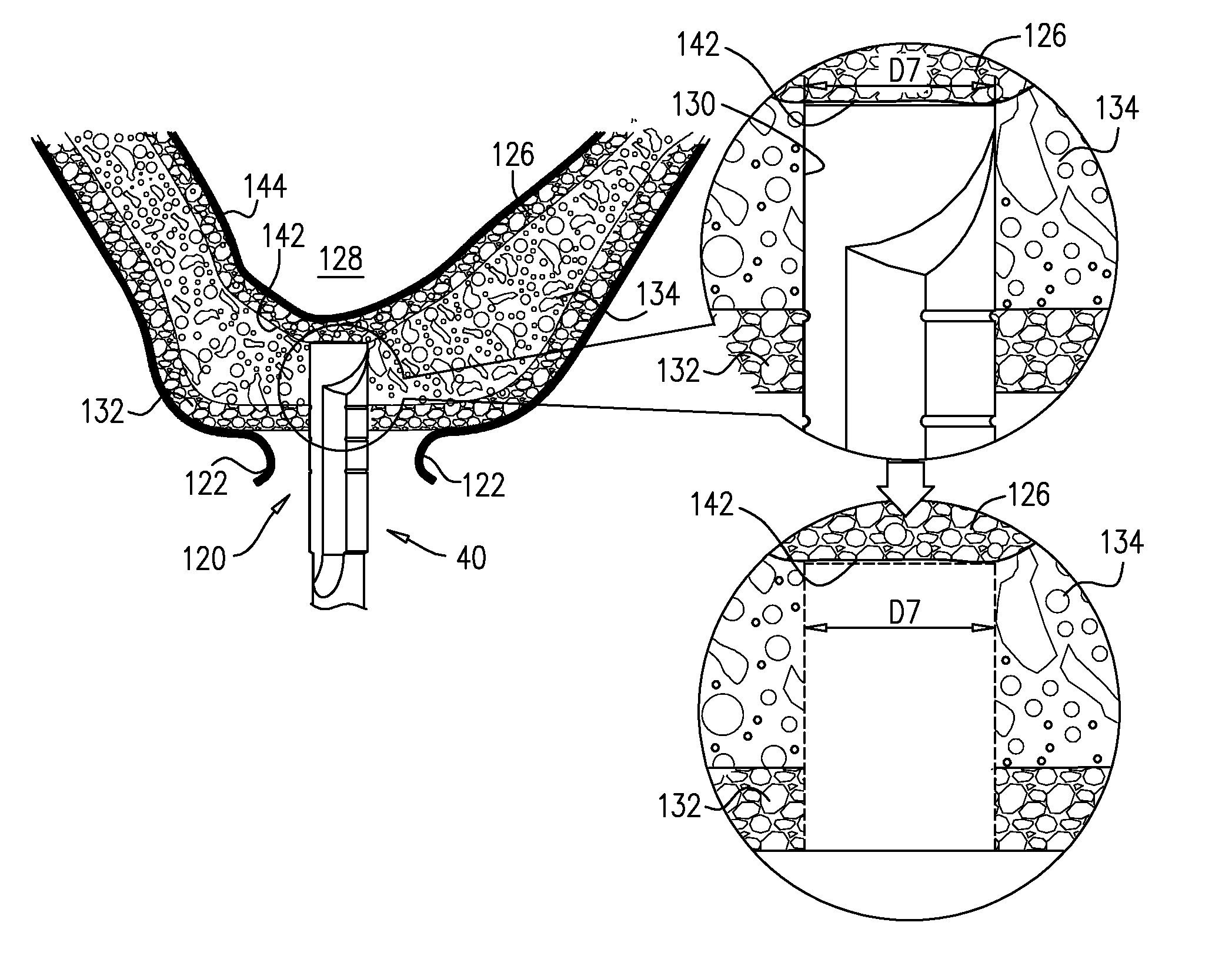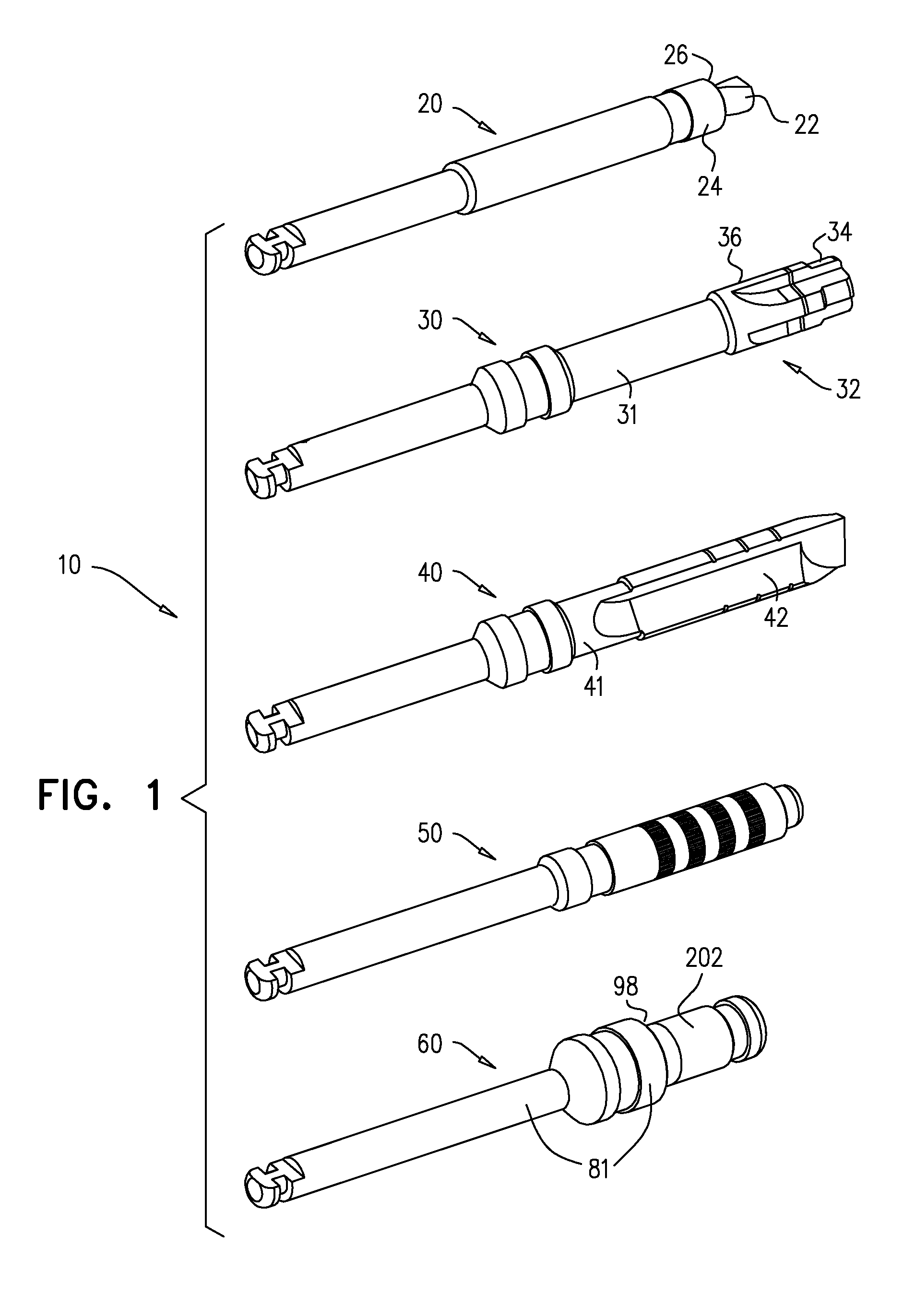Cortical drilling
a technology of cortical drilling and implants, which is applied in the field of minimally invasive sinus lift implants and implantation methods, can solve the problems of shoulder slowness but does not stop the advancement of the drill bi
- Summary
- Abstract
- Description
- Claims
- Application Information
AI Technical Summary
Benefits of technology
Problems solved by technology
Method used
Image
Examples
Embodiment Construction
[0124]FIG. 1 is a schematic illustration of a set 10 of dental tools, in accordance with an application of the present invention. Set 10 or a subset thereof may be used to perform the dental procedures described herein, and / or to perform other dental procedures. Set 10 may include one or more of the following dental tools:[0125]a pilot drill 20, which typically comprises a dental twist drill shaped so as to define a stopper 24. Pilot drill 20 is shaped so as to define a proximal shaft 21, a distal bur 22, and stopper 24 proximal to bur 22. Stopper 24 has a greater diameter than that of bur 22, and defines a shoulder 26 comprising a non-cutting distal surface, which prevents advancement of pilot drill 20 beyond a depth equal to a length of bur 22. Typically, bur 22 has a length of between 2 and 5, such as 3 mm;[0126]a counterbore drill 30, which is shaped so as to define a proximal shaft 31 and a distal bur 32. Distal bur 32 includes distal and proximal portions 34 and 36. Proximal p...
PUM
 Login to View More
Login to View More Abstract
Description
Claims
Application Information
 Login to View More
Login to View More - R&D
- Intellectual Property
- Life Sciences
- Materials
- Tech Scout
- Unparalleled Data Quality
- Higher Quality Content
- 60% Fewer Hallucinations
Browse by: Latest US Patents, China's latest patents, Technical Efficacy Thesaurus, Application Domain, Technology Topic, Popular Technical Reports.
© 2025 PatSnap. All rights reserved.Legal|Privacy policy|Modern Slavery Act Transparency Statement|Sitemap|About US| Contact US: help@patsnap.com



